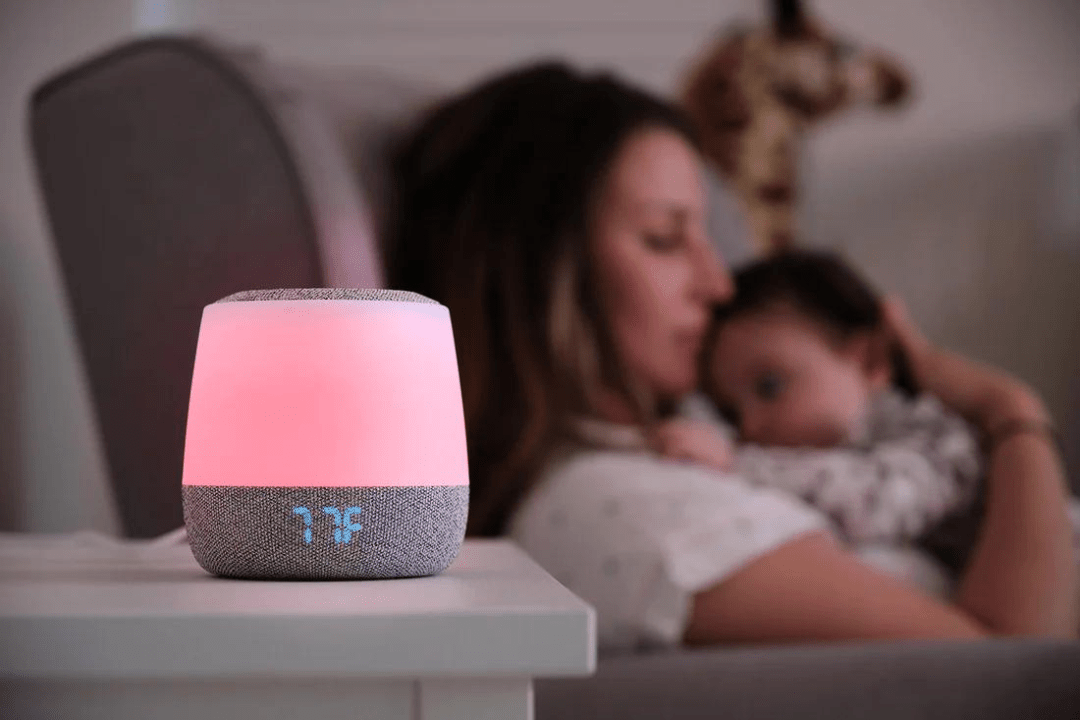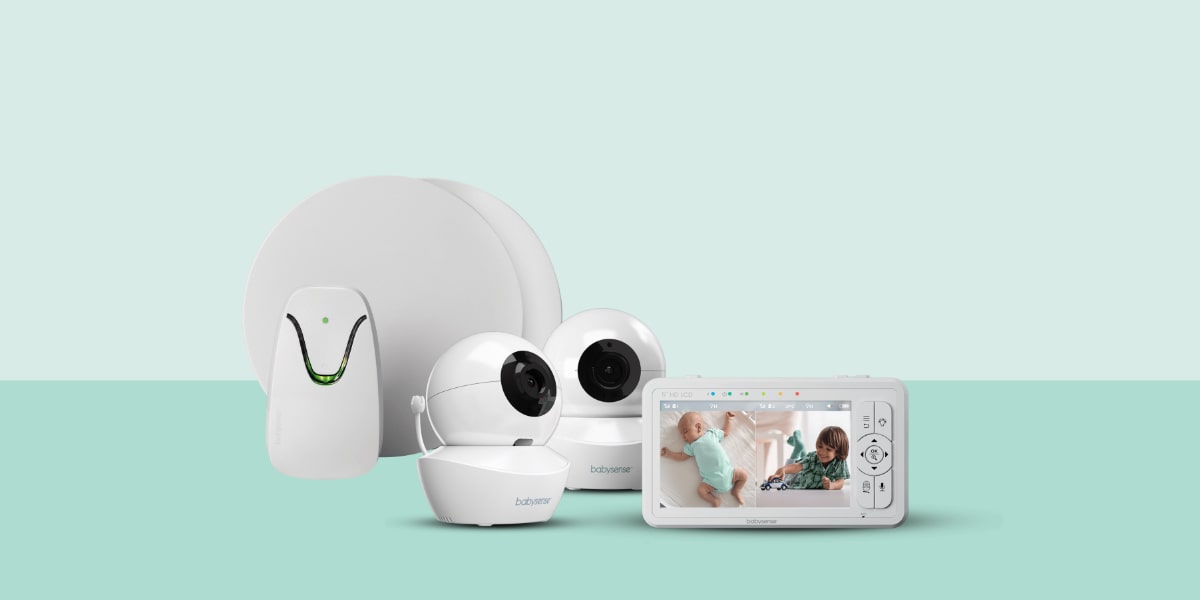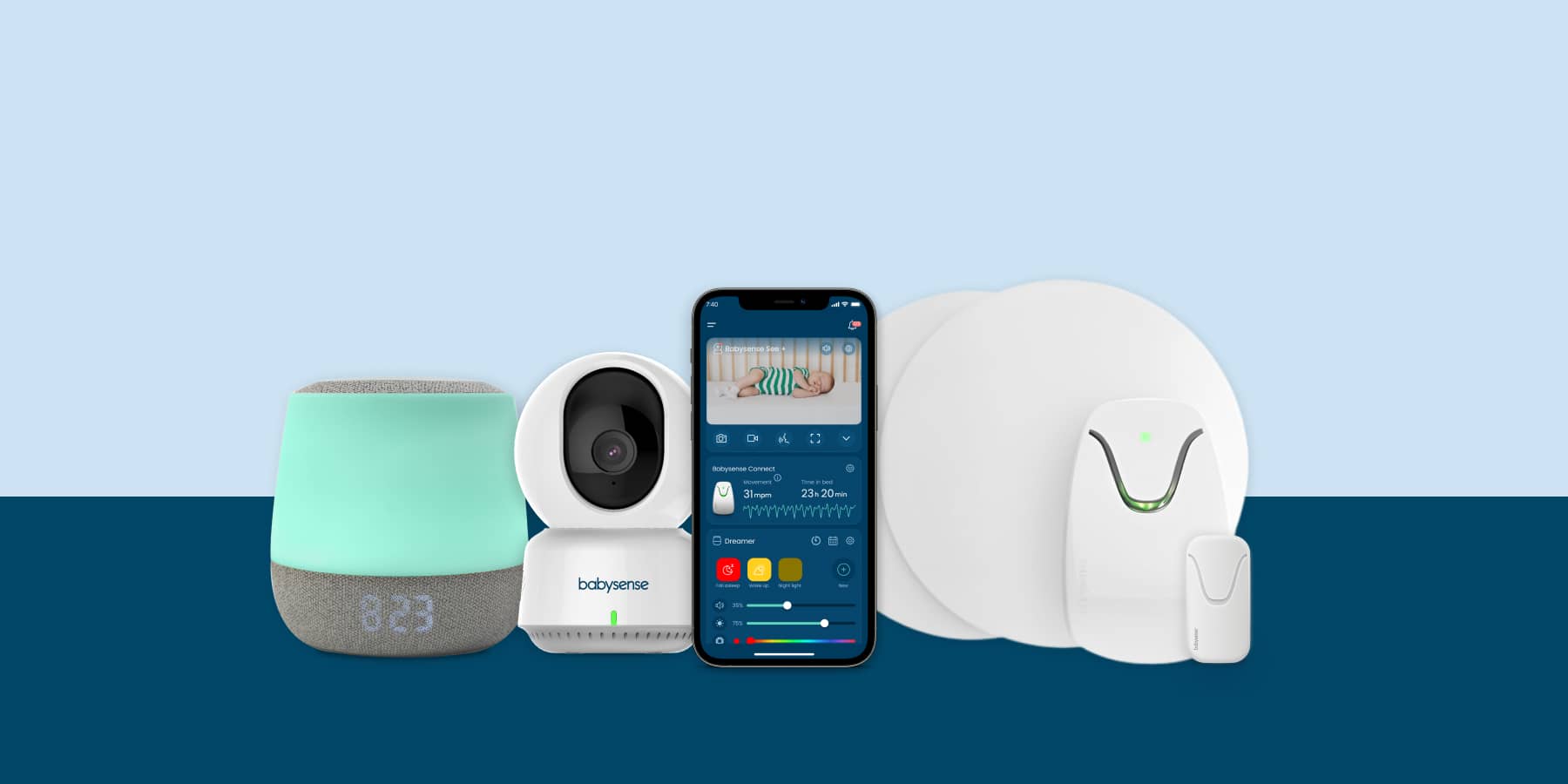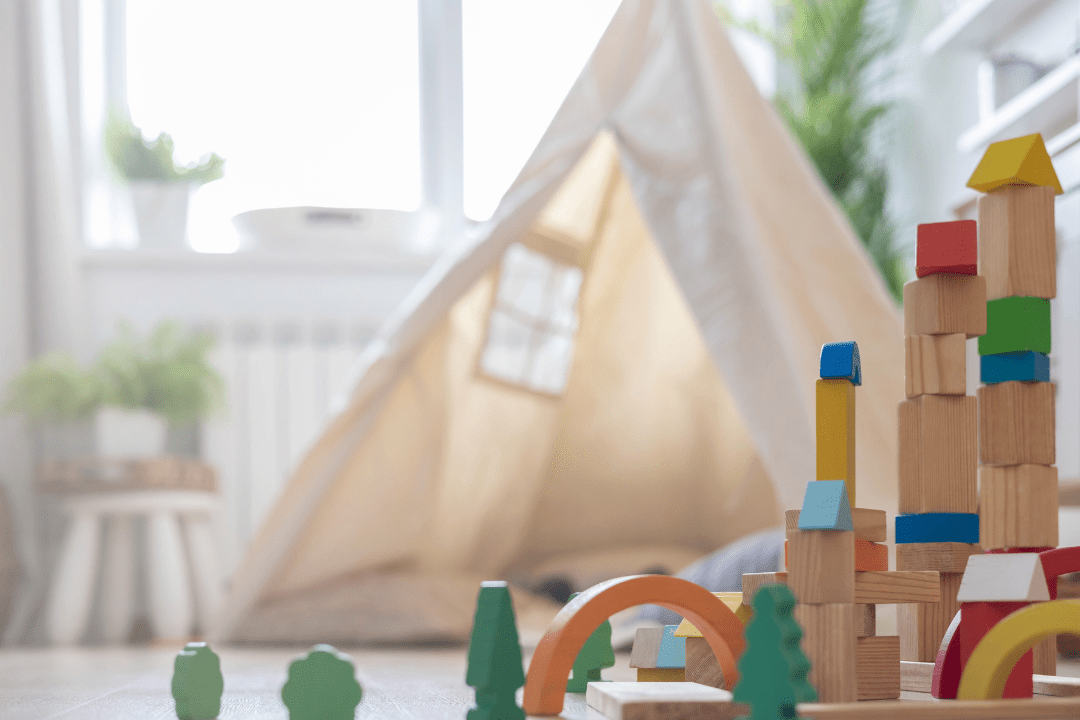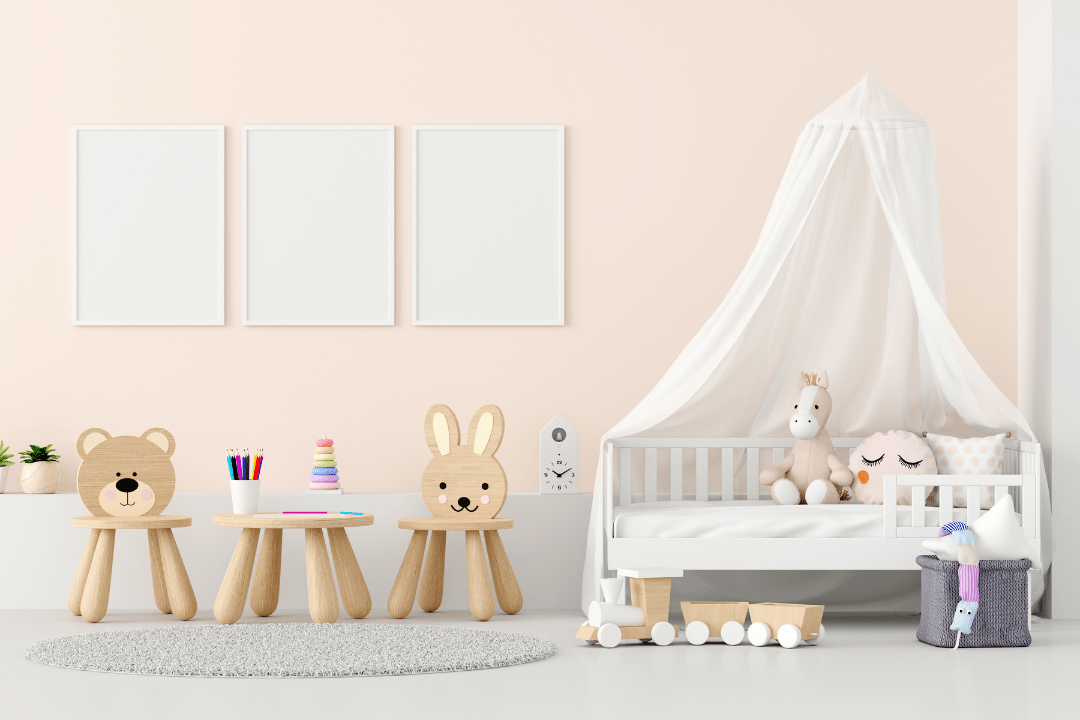Baby Night Light & Sound Machine: The Quest for Better Baby Sleep

Being a new parent is tough! You're exhausted, but your little one seems wide awake at all hours. If you've heard about using white noise to help your baby sleep, you're on the right track! This guide will help you navigate the world of sleep sounds and find the perfect one for your baby or even toddler.
If you are in need of an answer to how to get my toddler to sleep later" or simply, my baby won’t sleep, help!". A sound & Light machine may be your answer...
In the realm of sleep science, it's crucial to understand the different types of noise that are often associated with restful sleep. The key to understanding these noise types is recognizing that they each have a unique sound characteristic. You may have heard white noise but there are some you might be less familiar with. Each of these colors represents a specific range of sounds that can influence our sleep patterns, specifically for your little one.
Understanding Sleep Sounds: What sound is best for sleep?
There are different types of noise machines that can help your baby sleep. Each type creates a unique sound.
White Noise vs. Pink Noise
-
White Noise Sleep: Imagine turning on a fan or static on the radio. White noise is a constant sound that blocks out other noises that might wake your baby. It can be calming because it reminds your baby of the sounds they heard in the womb. In essence, white noise serves as an auditory "security blanket" for your little one, mimicking the womb's comforting environment, making the external world seem less startling and more manageable.
-
Pink Noise: This sounds more like raindrops or ocean waves. It's gentler than white noise and might be a better option if you want a softer lullaby. Several studies indicate that pink noise can not only promote deeper sleep but also enhance cognitive abilities, hinting at its possible role in supporting brain development.
Dreamer Smart Infant Sound Machine With Night Light & White Noise, Controlled via Baby Monitor App
When Choosing More Calming Sounds - Don't Forget Brown Noise!
Brown noise is like the sound of a waterfall or rushing wind. While not as common as white or pink noise, some babies find it very calming.
Ambient Sounds – Familiar Comforts
The daily rhythm of household activities generates a unique soundscape that your baby may find soothing. This may include the steady hum of your refrigerator, the cyclical churn of the washing machine, or even the rhythmic tick-tock of a clock. These sounds, often termed ambient sounds, can provide a sense of familiarity and security for your baby, making them excellent sleep aids.
Important Safety Tips

- Volume matters! Keep the noise level low, about as loud as a soft shower (around 50 decibels). Too loud can damage your baby's hearing.
- Let there be quiet too! Don't bombard your baby with constant noise. They need quiet time during the day to process their surroundings.
- Monitor your baby. A baby monitor allows you to keep an eye on your baby while they sleep, giving you peace of mind. Monitors even have built-in white noise features are key!
Remember to allow for periods of quiet during the day. This ensures your baby isn't subjected to constant noise and helps prevent overstimulation, allowing them time to process their surroundings in silence. By providing a balanced sound environment, you can facilitate healthier sleep habits while safeguarding your baby's hearing and overall well-being.
A tip to remember is that you should be able to talk over the noise easily without raising your voice. As always, it's about finding a middle ground - a sound that's loud enough to soothe, but not so loud as to harm.
Light and Sleep: Choosing the Right Color Nightlight
Just like sound, light can also affect your baby's sleep. Harsh overhead lights can be stimulating, so consider using a baby night light. Calming colors, like blue or dim yellow, can help your baby relax and wind down for sleep.
Using Colored Lights and Sounds for Better Baby Sleep

Finding the Right Sound:
- White Noise: This is a great all-rounder, especially for newborns. It blocks out startling noises and mimics the womb's environment. Use a white noise machine or apps with white noise options.
- Pink Noise: Try pink noise if you find white noise a bit too strong. It's gentler and might be more soothing for your baby.
- Brown Noise: This calming sound is similar to nature sounds like waterfalls. It's worth a try if your baby isn't responding to white or pink noise.
When to Use Each Sound:
- Start with white noise: It's a good starting point for most babies. Introduce it during playtime leading up to bedtime to create a sleep association.
- Switch to pink noise later: As your baby gets older and sleeps more soundly, you can transition to pink noise for a gentler calming effect.
- Brown noise for specific needs: If your baby struggles with colic or gas, brown noise might be helpful because of its low-frequency sound waves.
Choosing the Right Light Color:
- Avoid bright lights: Bright overhead lights suppress melatonin, the sleep hormone. Keep the room dark or use a dim night light.
- Calming colors: Opt for a night light with a blue or soft yellow hue. These colors are known to promote relaxation.
Light and Sound Routine:
- Dim the lights: Start dimming the lights 30 minutes before bedtime to signal sleep time.
- Introduce sound: Turn on the chosen sleep sound during this calming down period.
- Consistency is key: Use the same light and sound routine every night to help your baby learn to associate them with sleep.
Every baby is different. Experiment with different sounds and light colors to see what works best for your little one. Be patient and keep adjusting the routine until you find the perfect combination for a peaceful night's sleep for both you and your baby!

